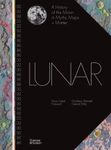Textbook
By: Jonathan M Marr(Author), Ronald L Snell(Author), Stanley E Kurtz(Author)
348 pages, 7 colour & 144 b/w illustrations, 4 tables
![Fundamentals of Radio Astronomy Fundamentals of Radio Astronomy]()
Click to have a closer look
About this book
Contents
Customer reviews
Biography
Related titles
About this book
As evidenced by five Nobel Prizes in physics, radio astronomy in its 80-year history has contributed greatly to our understanding of the universe. Yet for too long, there has been no suitable textbook on radio astronomy for undergraduate students.
Fundamentals of Radio Astronomy: Observational Methods is the first undergraduate-level textbook exclusively devoted to radio astronomy telescopes and observation methods. This book, the first of two volumes, explains the instrumentation and techniques needed to make successful observations in radio astronomy. With examples interspersed throughout and problems at the end of each chapter, it prepares students to contribute to a radio astronomy research team.
Requiring no prior knowledge of astronomy, the text begins with a review of pertinent astronomy basics. It then discusses radiation physics, the collection and detection of astronomical radio signals using radio telescopes, the functioning of various components of radio telescopes, and the processes involved in making successful radio observations. Fundamentals of Radio Astronomy also provides a conceptual understanding of the fundamental principles of aperture synthesis and a more advanced undergraduate-level discussion of real-world interferometry observations.
Web Resource A set of laboratory exercises is available for download on the book's CRC Press web page. These labs use the Small Radio Telescope (SRT) and the Very Small Radio Telescope (VSRT) developed for educational use by MIT's Haystack Observatory. The web page also includes a Java package that demonstrates the principles of Fourier transforms, which are needed for the analysis of interferometric data.
Contents
Introductory Material
Brief History of Radio Astronomy
Some Fundamentals of Radio Waves
Finding Our Way in the Sky
Basic Structure of a Traditional Radio Telescope
Radio Maps
Introduction to Radiation Physics
Measures of the Amount of Radiation
Blackbody Radiation
Rayleigh–Jeans Approximation
Brightness Temperature
Coherent Radiation
Interference of Light
Polarization of Radiation
Radio Telescopes
Radio Telescope Reflectors, Antennas, and Feeds
Heterodyne Receivers
Noise, Noise Temperature, and Antenna Temperature
Bolometer Detectors
Spectrometers
Very Low-Frequency Radio Astronomy
Single-Dish Radio Telescope Observations
Basic Measurements with a Single-Dish Telescope
Antenna Beam
Observing Resolved versus Unresolved Sources
Spectral-Line Observations
Obtaining Radio Images
Calibration of a Radio Telescope
Telescope Sensitivity Considerations in Planning an Observation
Polarization Calibration
Aperture Synthesis Basics: Two-Element Interferometers
Why Aperture Synthesis?
Two-Element Interferometer
Observations of a Single Point Source
Fringe Function
Visibility Function
Observations of a Pair of Unresolved Sources
Observations of a Single Extended Source
Coherence and the Effects of Finite Bandwidth and Integration Time
Basic Principles of Interferometry
Aperture Synthesis: Advanced Discussion
Cross-Correlation of Received Signals
Complex-Valued Cross Correlation
Complex Correlation of a Point Source at a Single Frequency
Extended Sources and the Fourier Transform
Fourier Transforms for Some Common Source Shapes
Three Dimensions, the Earth's Rotation, and the Complex Fringe Function
Nonzero Bandwidth and Finite Integration Time
Source Structure and the Visibility Function
The Earth's Rotation and uv Tracks
Interferometers as Spatial Filters
Sensitivity and Detection Limits
Calibration
Image Formation
Very Long Baseline Interferometry
Appendices
Customer Reviews
Biography
Jonathan M. Marr is a lecturer of physics and astronomy at Union College. His research involves high-resolution, radio-wavelength observations of radio galaxies and the Galactic center. He earned a PhD in astronomy from the University of California, Berkeley.
Ronald L. Snell is a professor of astronomy at the University of Massachusetts, Amherst. His research interests include the physical and chemical properties of molecular clouds, star formation, and molecular outflows; he also has extensive experience observing at radio wavelengths. He earned a PhD in astronomy from the University of Texas at Austin.
Stanley E. Kurtz is a professor of radio astronomy and astrophysics at the National Autonomous University of Mexico. His research interests include massive star formation, the interstellar medium, and radio astronomy instrumentation and techniques. He earned a PhD in physics from the University of Wisconsin at Madison.
Textbook
By: Jonathan M Marr(Author), Ronald L Snell(Author), Stanley E Kurtz(Author)
348 pages, 7 colour & 144 b/w illustrations, 4 tables
"This is an excellent introduction for students wanting to get into the exciting world of radio astronomy. It starts at the basics and builds up nicely to provide readers with the understanding they will need for both single dish observing and radio interferometry. The separation of the more mathematically challenging aspects means that it can be used at a variety of levels, including for advanced undergraduate or postgraduate students. Given the wealth of radio research facilities, such as the JVLA, ALMA, and the upcoming SKA, this is also a very timely textbook. I will start using it immediately in my training programs."
– Melvin Hoare, Professor of Astrophysics, University of Leeds


































